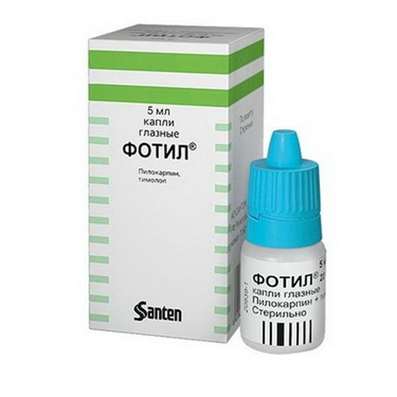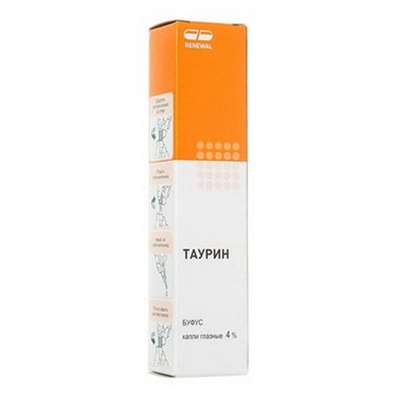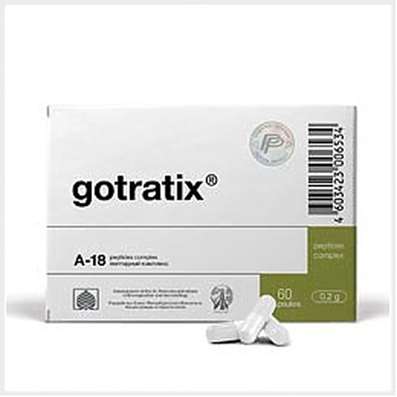Instruction for use: Advantan
I want this, give me price
Active substance Methylprednisolone aceponate
ATX Code D07AC14 Methylprednisolone aceponate
Pharmacological group
Glucocorticosteroid for topical use [Glucocorticosteroids]
Nosological classification (ICD-10)
A18.4 Tuberculosis of skin and subcutaneous tissue
Lupus, Scrofuloderma
A53.9 Syphilis, unspecified
Tertiary syphilis, Syphilis
B01 Varicella [varicella]
Chickenpox, Newborn chickenpox, Varicella Zoster, Smallpox chickenpox, Herpes Varicella zoster
B02 Shingles [herpes zoster]
Herpes zoster, Shingles Herpes, Localized shingles, Infection caused by the herpes zoster virus, Shingles
L20 Atopic dermatitis
Itchy atopic eczema, Common neurodermatitis, Allergic skin diseases, Allergic skin diseases of non-infectious etiology, Allergic skin diseases of non-microbial etiology, Allergic skin diseases, Allergic skin lesions, Allergic manifestations on the skin, Allergic dermatitis, Allergic diathesis, Allergic itching dermatosis, Allergic Skin Disease, Allergic skin irritation, Dermatitis allergic, Atopic dermatitis, Dermatosis allergic, Diathesis exudative, Skin Allergic Disease, Skin allergic reaction to medicinal and chemical preparations, Skin reaction to medication, Skin and allergic disease, Acute eczema, Chronic atopic dermatitis, Exudative diathesis, Itching allergic dermatosis
L22 Diaper dermatitis
Children's eczema, Diaper rash, Erythema from diapers
L23 Allergic contact dermatitis
Allergic dermatitis, Purulent allergic dermatopathies, Contact allergic reaction, Contact allergic dermatitis, Photoallergic contact dermatitis
L25 Contact dermatitis, unspecified
Intertriginous dermatitis, Contact Eczema, Contact dermatitis, Contact dermatitis of non-microbial etiology, Contact dermatitis, Skin wetting surface, Fractures, Intertrigo,Skin Difficulty, Subacute and chronic contact dermatitis, Phlebotoderma, Simple contact dermatitis complicated by impetigo
L30.1 Dyshidrosis [pomfolix]
Skin dyshidrosis, Pomfolix, Eczema dysgidrotic, Dyshidrotic eczema, Infected dyshidrosis, Dyshidrosis, Dyshidrotic dermatitis
L30.3 Infectious dermatitis
Microbial skin infections, Dermatitis with concomitant bacterial infections, Dermatitis in the presence of a bacterial infection or suspected of it, Infected eczema of external auditory canal, Secondarily infected dermatosis, Erythema migrans, Secondarily infected dermatoses , Dermatitis re-infected, Infectious dermatitis, Dermatitis infected, Dermatoses complicated by a secondary infection, Dermatoses complicated by primary and secondary infection, Dermatoses complicated by primary and / or secondary infection, Infected eczema, Infected dermatitis, Infected dermatosis, Migrating erythema, Microbial eczema, Chronic migratory erythema, Eczema is infected, Erythema Migrating, Bacterial dermatitis, Erythema migratory chronic, Superinfectant dermatitis, Necrolytic Migrating erythema
L30.9 Dermatitis, unspecified
Allergic dermatoses complicated by a secondary bacterial infection, Anal eczema, Bacterial maturation, Varicose Eczema, Venous dermatitis, Inflammation of the skin, Inflammation of the skin upon contact with plants, Inflammatory Skin Diseases, Inflammatory skin reactions, Inflammatory processes of the skin, Hypostatic dermatitis, Fungal Eczema, Fungal dermatosis, Dermatitis, Dermatitis is stagnant, Dermatitis and eczema in the anal area, Dermatitis acute contact, Perianal dermatitis, Dermatosis, Dermatosis of the scalp, Dermatosis of psoriasis, Dermatosis with persistent itching, Dermatoses, Dermatoses itchy, Other itching dermatoses, Significant eczematous manifestations, Itching with, dermatoses, Itching eczema, True eczema, Skin reaction to insect bites,Skin itching with dermatosis, Constitutional eczema, Weeping eczema, Drowsing inflammatory skin disease, Dying Infectious-Inflammatory Skin Disease, Non-allergic dermatitis, Nummular eczema, Acute contact eczema, Acute inflammatory skin disease, Acute dermatosis, Acute severe dermatosis, Perianal dermatitis, Superficial dermatosis, Subacute Contact Eczema, Simple dermatitis, Occupational dermatitis, Psychogenic dermatosis, Bubble dermatitis of newborns, Pustular eruptions, Irritation and redness of the skin, Low-flammable eczema, Dry atrophic eczema, Dry eczema, Toxic dermatitis, Ear eczema like dermatitis, Chronic eczema, Chronic dermatosis, Chronic common dermatosis, Scaly papular dermatosis, Eczema, Eczema anal region, Eczema of the hands, Eczema Contact, Eczema lichenized, Eczema Nummular, Eczema acute, Eczema acute contact, Eczema subacute, Eczematous dermatitis, Eczema-like rashes, Ecome exogenous, Endogenous eczema, Gluteal dermatitis, Restricted itchy dermatitis
L71 Rosacea
Pink acne, Acne Red, Acne pink, Redheads
L71.0 Periodic dermatitis
Dermatitis perioralis
T88.1 Other complications associated with immunization, not elsewhere classified
Composition
Ointment for external use 1 g
active substance:
Methylprednisolone aceponate 0.001 g
Auxiliary substances: paraffin white soft - 0.35 g; Paraffin liquid - 0.239 g; Wax bee white - 0,04 g; Emulsifier Dehimuls E - 0.07 g; Purified water 0.3 g
Cream for external use 1 g
active substance:
Methylprednisolone aceponate 0.001 g
Auxiliary substances: decyl oleate 0.1 g; Glyceryl monostearate 40-55% - 0.085 g; Cetostearyl alcohol (cetyl alcohol - 60%, stearyl alcohol - 40%) - 0.025 g; Solid fat - 0.025 g; Softizan 378 - 0.075 g; Macrogol stearate - 0.03 g; Glycerol 85% - 0.05 g; Disodium edetate 0.001 g; Benzyl alcohol - 0.01 g; Butyl hydroxy toluene 0.00006 g; Purified water - 0.59794 g
Ointment for external use (oily) 1 g
active substance:
Methylprednisolone aceponate 0.001 g
Auxiliary substances: paraffin white soft - 0.425 g; Paraffin liquid - 0.394 g; Wax microcrystalline - 0.15 g; Castor hydrogenated oil - 0.03 g
Emulsion for external use 1 g
active substance:
Methylprednisolone aceponate 0.001 g
Auxiliary substances: medium-chain triglycerides - 0.15 g; Softizan 378 - 0.05 g; Polyoxyethylene-2-stearyl alcohol - 0.04 g; Polyoxyethylene-21-stearyl alcohol-0.04 g; Glycerol 85% - 0.03 g; Disodium edetate - 0.01 g; Benzyl alcohol - 0.0125 g; Purified water - 0.6755 g
To the beginning ^
Description of dosage form
Ointment: homogeneous white or slightly yellowish opaque.
Cream: white or yellowish opaque.
Ointment oily: white or slightly yellowish translucent oily ointment.
Emulsion: white opaque emulsion.
pharmachologic effect
Pharmacological action - anti-inflammatory, antiallergic, glucocorticoid.
Pharmacodynamics
With external use, Advantan® suppresses inflammatory and allergic skin reactions, as well as reactions associated with increased proliferation, which leads to a reduction in the objective symptoms of inflammation (erythema, edema, wetness, etc.) and subjective sensations (itching, irritation, pain etc.).
When applying methylprednisolone aceponate externally at the recommended dose, the systemic effect is minimal both in humans and in animals. After repeated application of the drug Advantan® on large surfaces (40-60% of the surface of the skin), as well as the use of an occlusive bandage, there are no violations of the adrenal glands: the level of cortisol in the plasma and its circadian rhythm remain within normal limits, the decrease in the level of cortisol in the daily urine is not Occurs.
In clinical trials with the use of the drug Advantan ® up to 12 weeks in adults and up to 4 weeks in children (including the early age), there was no development of skin atrophy, telangiectasias, striae and acne-like eruptions.
Methylprednisolone aceponate (especially its main metabolite - 6α-methylprednisolone-17-propionate) binds to intracellular GCS receptors.
The steroid-receptor complex binds to certain DNA regions of the immune response cells, thus causing a series of biological effects. In particular, binding of the steroid-receptor complex to DNA cells of the immune response leads to the induction of macrocortin synthesis. Macrocortin inhibits the release of arachidonic acid and thereby - the formation of inflammatory mediators such as PG and LT.
Inhibition of GCS synthesis of vasodilating PG and potentiation of vasoconstrictive action of adrenaline leads to a vasoconstrictor effect.
Pharmacokinetics
Methylprednisolone aceponate is hydrolyzed in the epidermis and dermis. The main and most active metabolite is 6α-methylprednisolone-17-propionate, which has a significantly higher affinity for the GCS-receptors of the skin, which indicates the presence of its bioactivation in the skin.
The degree of transdermal absorption for ointment and cream depends on the condition of the skin, the dosage form and the method of application (on an open skin site or with or without an occlusive dressing).
Percutaneous absorption in children and adults with atopic dermatitis (neurodermatitis) and psoriasis was not more than 2.5%, which is only slightly higher than in healthy volunteers (0.5-1.5%).
After entering the systemic bloodstream, 6α-methylprednisolone-17-propionate is rapidly conjugated to glucuronic acid and thus inactivated. Metabolites of methylprednisolone aceponate are eliminated mainly by kidneys with T1 / 2 for about 16 hours. Methylprednisolone aceponate and its metabolites are not cumulative in the body.
Indications
Inflammatory skin diseases, sensitive to therapy with topical SCS:
Atopic dermatitis, neurodermatitis, childhood eczema;
True eczema;
Microbial eczema;
Professional eczema (for all forms except emulsion);
Simple contact dermatitis;
Allergic (contact) dermatitis;
Dyshidrotic eczema (for all forms except emulsion).
Additionally for the emulsion:
Seborrheic dermatitis / eczema;
Photodermatitis, sunburn.
Contraindications
Tuberculosis or syphilitic processes in the application area;
Viral diseases (eg, chicken pox, shingles) in the area of application of the drug;
Rosacea, perioral dermatitis in the application area;
Children's age (up to 4 months);
Skin sites with manifestations of reactions to vaccination;
Hypersensitivity to the components of the drug.
pregnancy and lactation
If you need to use the drug Advantan ® during pregnancy and lactation, you should carefully weigh the potential risk to the fetus and the expected benefit of treatment for the mother. During these periods, long-term use of the drug on extensive skin surfaces is not recommended.
Nursing mothers should not apply the drug to the mammary glands.
Side effects
Usually the drug is well tolerated.
Very rarely (less than 0.01% of cases), local reactions can occur, such as itching, burning, erythema, the formation of vesicle rash. If the drug is used more than 4 weeks and / or on an area of 10% or more of the body surface, the following reactions may occur: skin atrophy, telangiectasia, striae, acneiform skin changes, systemic effects due to absorption of CS. In clinical trials, none of the above side effects were noted with the use of the drug Advantan ® up to 12 weeks in adults and up to 4 weeks in children.
In rare cases (0.01-0.1%), folliculitis, hypertrichosis, perioral dermatitis, depigmentation of the skin, allergic reactions to one of the components of the drug can be observed.
Interaction
Not found.
Dosing and Administration
For ointments for external use, cream for external use, ointments for external use (greasy)
Outwardly.
Adults and children from 4 months of age.
The drug is applied once a day with a thin layer on the affected areas of the skin. As a rule, the duration of continuous daily treatment with the drug Advantan® should not exceed 12 weeks for adults and 4 weeks for children.
Additionally for ointments for external use
In subacute or chronic inflammatory skin diseases that are not accompanied by wetting, a dosage form with a balanced ratio of fat and water is necessary. Ointment Advantan has a therapeutic effect, also helping to eliminate dry skin and restore its normal fat content.
In addition to the cream for external use
In subacute and acute inflammation without pronounced wetness, a dosage form with a low fat content and a high water content is required. Advantan cream provides elimination of the inflammatory process both on smooth skin and on the scalp, incl. On the skin, prone to fat.
In addition to ointments for external use (greasy)
To treat long-term chronic inflammatory skin processes with very dry skin, anhydrous dosage form is needed. The occlusive effect of the oily ointment Advantan provides a pronounced therapeutic effect even with significant lichenification and infiltration.
For emulsion for external use
Outwardly. Adults and children from 4 months of age. The drug is applied once a day (to treat sunburn 1-2 times a day) with a thin layer on the affected areas of the skin, slightly rubbing.
Usually treatment should not exceed 2 weeks.
If the skin is excessively dry when using the Advantan emulsion, it is necessary to switch to a higher fat form (Advantan ointment or Advanthan oily ointment).
Overdose
In the study of acute toxicity of methylprednisolone aceponate, there was no risk of acute intoxication with excessive single-dose skin application (application of the preparation over a large area under conditions favorable for absorption) or unintentional ingestion.
If the SCS is excessively long and / or intense, local skin atrophy (thinning of the skin, telangiectasia, striae) can develop. When the appearance of atrophy, the drug must be canceled.
special instructions
In the presence of bacterial complications and / or dermatomycosis in addition to therapy with the drug Advantan ®, it is necessary to carry out specific antibacterial and / or antimycotic treatment.
Avoid contact with the eyes.
As in the case of systemic GCS, glaucoma can develop after external application of GCS (for example, with large doses or with a very long application of occlusive dressings or application to the skin around the eyes).
Influence on the ability to drive vehicles and work with machinery. Not found.
Form of issue
Ointment for external use, 0.1%. By 5, 15, 20, 25, 30 and 50 g of aluminum, laminated PE (polyethylene) tube, sealed membrane, with a screwable plastic cap. The tube is placed in a cardboard box.
Cream for external use, 0,1%. For 5, 15, 20, 25, 30 and 50 g in an aluminum, laminated PE tube, sealed membrane, with a screwable plastic cap. The tube is placed in a cardboard box.
Ointment for external use (oily) 0.1%. For 5, 10, 15, 20, 25, 30 and 50 g in an aluminum, laminated PE tube, sealed with a membrane, with a screwable plastic cap. The tube is placed in a cardboard box.
Emulsion for external use 0,1%. For 20 or 50 grams in an aluminum, laminated PE tube, with a screw-on plastic cap. The tube is placed in a cardboard box.
Terms of leave from pharmacies
Without recipe.
Storage conditions
At a temperature not exceeding 30 ° C.
Keep out of the reach of children.
Shelf life
Cream for external use 0.1% - 3 years.
Ointment for external use 0.1% - 3 years.
Ointment for external application fat 0.1% - 5 years.
Emulsion for external use 0.1% - 3 years.
Do not use after the expiry date printed on the package.

 Cart
Cart





